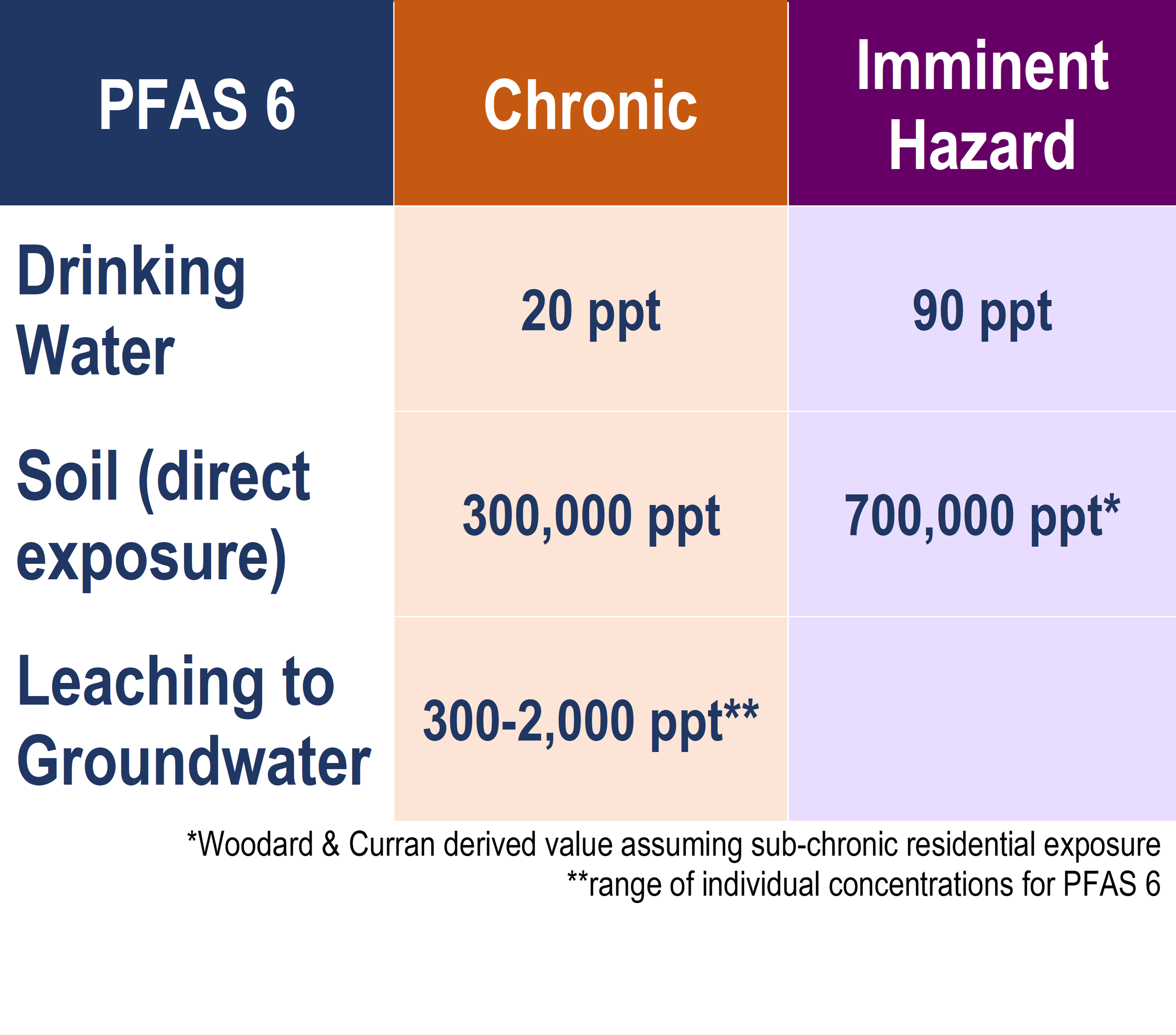Because of the high exposure potential, environmental professionals consider per- and poly-fluorinated compounds (PFAS) contamination to be primarily a drinking water problem. When regulatory limits are set for water utilities or hazardous waste site cleanups, the levels typically reflect long-term exposure: the amount of PFAS a person could be exposed to over a lifetime of drinking water from the same source. But what about short-term exposure and risks? What about direct contact and incidental ingestion exposures to soils, which are oftentimes the source medium for groundwater contamination?
Soil risk-based concentrations (RBCs) based on direct contact (incidental ingestion, dermal contact, dust inhalation) are significantly different than soil contaminant limits pertaining to leaching to groundwater. Like drinking water limits, these soil RBCs (for example, the “Method 1 Standards” in Massachusetts) primarily pertain to long-term exposure. However, under certain circumstances — and in some states, like Massachusetts, a regulatory driver — it can be useful to understand short-term risks associated with direct contact and incidental ingestion exposures to soil. The goal is to identify a level at which contacting soil impacted with PFAS may pose a more immediate hazard to people who contact it.
Massachusetts regulates 6 PFAS chemicals (PFDA, PFHpA, PFHxS, PFNA, PFOS, PFOA) with established limits for both chronic and imminent hazard exposure in drinking water, chronic exposures to soil, and soil leaching to groundwater: Woodard & Curran back-calculated an “imminent hazard” level for soil contact, based on MassDEP toxicity values for PFOA/PFOS. This value, 700 ppb, is significantly higher than the soil levels protective of leaching to groundwater and higher than the health-based direct contact values for chronic exposure, as depicted below.

Soil Contamination in Context
PFAS have been found globally in soil, air, groundwater, surface water, sediment, plants, and human and animal tissues. Although drinking water has been the regulatory focus, potential exposure to PFAS in soil can also be significant enough to merit immediate action. While it may not seem that soil exposure poses a hazard to the general public on the scale of that from drinking water, understanding this type of exposure and establishing both short- and long-term RBCs protects children who may be exposed at schools, playgrounds, and their back yards, as well as workers who may come into routine contact with soils, such as construction workers or landscapers.
Soil sampling may be performed for a number of reasons, all connected to suspected PFAS contamination. Airborne dispersion is a common trigger, particularly at sites near a facility with known PFAS air emissions. Sites in the vicinity of a confirmed aqueous firefighting foam (AFFF) release, such as near an airport or base, are also likely to require sampling and monitoring. Occasionally, soil sampling is part of the due diligence process in a property transfer, especially if a site was formerly occupied by a manufacturing facility that used PFAS in its processes. PFAS may have been detected in groundwater and soil sampling may be performed during an investigation into the source. Having an understanding of both the short-term and long-term soil RBCs for PFAS provides context for understanding and managing your soil-related exposures.
RBCs in Massachusetts and Beyond
Analyzing and setting RBCs for different exposure types allows state environmental agencies to establish safety standards to prevent long-term harm, regardless of how someone comes into contact with PFAS. However, like some other contaminants, especially those with potential short-term or developmental effects, there are certain soil concentrations for PFAS at which accelerated response actions must be taken. While it is unlikely that a one-time exposure to contaminated soil will result in actual health effects, regular or intense contact with highly contaminated soil over the course of only a few years can significantly elevate human health and environmental risks.
To learn more about PFAS risk assessment and management, check out our May webinar, PFActS vs. Pfears: Understanding and Communicating PFAS Human Health and Ecological Risk Issues.
